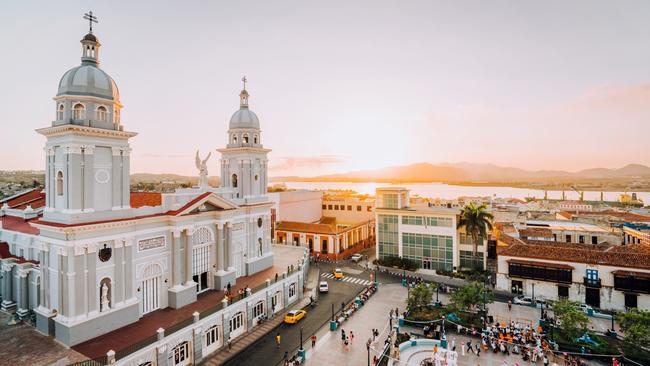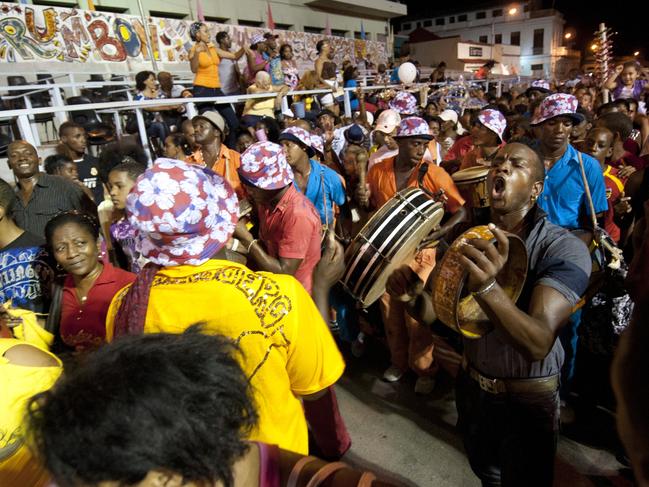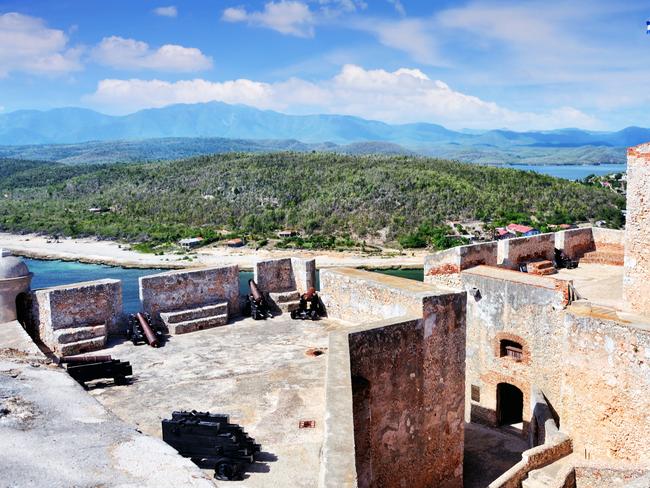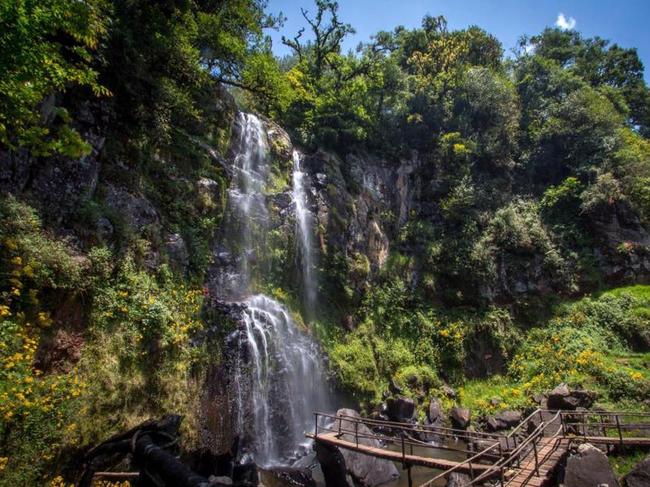Santiago de Cuba tingles with history
Santiago de Cuba is 900km from metropolitan Havana and has a raw Caribbean magic harder to access in the capital.

It’s 1am and the Conga de Tivoli is in full swing. With their hypnotic rhythms, the comparsas — those musical ensembles whose sound defines a Cuban conga — own the night. Their cacophony is produced by the Chinese cornet, adopted by Cubans from the Chinese population in the early 20th century, paired with Afro-Cuban percussion ranging from high-pitched quinto drums to brakes attacked with metal sticks. This is music to get fired up by. This is Santiago de Cuba.
It’s carnival but, while the garish floats and hip-swivelling salseras of the stands are glorious, “carnival” as a concept unfolds in Santiago all the time. There are the official events, such as the Fiesta del Fuego, when an effigy of the devil is incinerated to the raging fury of many hundred drums, music festivals from salsa to classical and the street-corner rumbas and daily outpourings of dance and musicality.
I am sitting with my guide to the city, Yenia Infante Frometa, a 29-year-old literature academic, in Parque Cespedes. Every corner tingles with history. Here is the building from which Fidel Castro gave his first presidential speech on January 1, 1959; there the 1515 governor’s house, home of the conquistador Diego Velazquez. The city’s pastl racism is inscribed in the street architecture. The Casa de la Cultura, once the Republican-era house of the Marques de las Delicias de Tempu, later the San Carlos Club, where wealthy white families hobnobbed. Mixed-race and black locals were banished; Cubans of colour were not allowed in the square.
It’s a history Santiagueros have reacted to with defiance and self-expression. Yenia is passionate. “Santiago is black and strong and fearless, like Antonio Maceo,” she proclaims, referencing the War of Independence hero immortalised in the bronze that triumphs above the city’s Plaza de la Revolucion. “Jose Marti was the thinker from Havana but Antonio was the real hero.”
Santiago de Cuba is Cuba’s second city and is at the core of the nation’s identity. Its sons led wars of independence and revolution. And it was the birthplace of Cuba’s beloved rum. But being 900km from metropolitan Havana, it’s a different kettle of fish. Santiago is cheaper, simpler and less touristy. It has a raw Caribbean magic harder to access in Havana. It is very black, very creative and more heartfelt. It’s up there with some of the great cities in terms of setting, ensconced in three ranges: the Sierra Maestra, Gran Piedra and Sierra de Boniato.
I am keen to experience the place in an organic way. It’s good to tick off the classic highlights: the stunning Morro Castle, which guards the port, with its sunset cannon ceremony; the Basilica del Cobre, where the icon of Cuba’s patron saint is displayed; the Casa de la Trova, where we hear the Grammy-winning Septeto Santiaguero belting out salsa; a tour of the Bacardi museum, which gives an insight into past privilege and exploitation; and revolutionary sights, such as the Moncada Barracks, which Castro raided in 1953.
But if you dig deeper you see that you can cram a cultural city break, a beach idyll and a rural escapade into one week without going to Havana at all.

The stunning casa particular — private bed and breakfast — where we are staying is proof the city is catching on to what entrepreneurial Habaneros twigged a decade ago: Cuba’s period homes can be co-opted into miniature boutique hotels of sorts. Casa Yiedra, the home of Reinaldo, a history of law professor, and his family, in the dreamy 20th-century garden district Vista Alegre, is a vast Californian-style residence. It’s an example of the way designers broke with the colonial construction code, choosing pantries and halls, large windows and doors and big backyards. Space, light, a library on Cuban history and enclosed patios filled with antiques and hammocks create artful calm.
The oasis of jungle delights out back is draped with ornamental creepers and lush tropical fruit trees. Eighty per cent of families — read wealthy and white — left this area after the revolution. Round the corner is the wedding-cake Bacardi mansion, now a place for children’s vocational training. Other palatial homes are schools, kindergartens, nursing homes or hospitals, plus there’s the Casa del Caribe devoted to the storytelling of rich Afro-Cuban culture.

Crucially, it’s round the corner from the house that Raul Castro moved to in semi-retirement, having given up the presidency to Miguel Diaz-Canel. Castro’s return is significant. The city has been painted, buildings restored and a European-style supermarket built. The message is: Santiago matters.
Tourism is concentrated in the city. But other sections of the province, although close, are unknown and undeveloped. They are also remarkably beautiful and worth discovering. Eastern Cuba is a different country. Here, we are closer to Haiti and Jamaica, with shared ties that go back centuries.

We leave the city for a coastal escapade. From Santiago towards Cabo Cruz there’s a bucolic route towards the cape with the mountains as a backdrop. The Sierra Maestra, the range that sheltered Castro’s revolutionaries, plunges to the ocean. Horse riders and ponies and traps parade along the potholed asphalt.
Tamarind trees line wild deserted beaches overhung with rocks. River mouths make dusk swimming spots. We reach the hamlet of Las Cuevas in just over two hours, a jumping-off point for the climb to Pico Turquino, Cuba’s highest peak — we’ve decided to do the first stretch.
Our guide points out butterflies, orchids, tiny cactuses and the call of the tocororo, the national bird that dies of sadness if it is caged. A couple of hours later we reach our destination, a waterfall, Cascada Paraiso. Its pea-green natural pool is vast and you can dive into it from the rocks.
When we get back down to Las Cuevas, it’s late afternoon. I walk alone, in silence so profound that the call of the ocean below sounds like a low roar. After a salty ablution in indigo surf we drive back in Santiago, replenished by this paradise and, when darkness falls, a ghostly, low-hanging supermoon.
Lydia Bell was a guest of Cuba Private Travel.
The Times

To join the conversation, please log in. Don't have an account? Register
Join the conversation, you are commenting as Logout